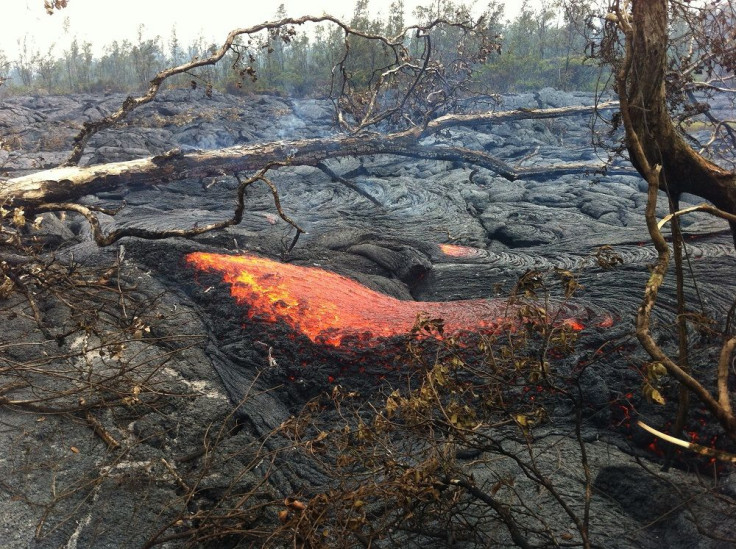Lava From Kilauea Explodes After Crater Collapses

Kilauea Volcano’s activities are far from over. After the lava overflow and eruption last week, its Halemaumau Crater collapsed on Sunday, causing an explosion that resulted in molten lava, rocks and gas flying in the air. According to the US Geological Survey’s Hawaiian Volcano Observatory, the collapsed triggered the small explosion.
Janet Babb, a geologist of the observatory, explained the phenomenon to the rocks that overhang on the lava lake being altered by the gas from the lava. When the rocks eventually give way, it collapsed into the lava and caused an explosion, reports Al Jazeera. The rocks are thrown 280 feet into the sky, Babb said.
She compares the rock hitting the lava to the top of a champagne bottle being knocked off, causing the release of gas. Babb adds that the explosion could result in ash and dust fallout, however, injuries are unlikely.
The geologist said the volume of the debris that would land on the visitor’s areas depends on the wind’s direction. Besides the explosion, a magnitude 3.6 earthquake was recorded in the area on early Monday morning.
Risks caused by the ash are both in the air and on land. It could enter into plane engines which could turn the ash into glass and clog the engine. On land, sulfur dioxide, or SO2, could lead to health problems for people who breathe the gas, reports Tech Times.
According to the observatory, the ambient SO2 concentrations vary but are higher than 10 parts per million, or ppm, and often exceed 50 ppm. It also includes a small amount of ash-sized tephra, the heaviest pieces of which are deposited on nearby surfaces and the finer ones carried several kilometres but eventually drop out of the plume.
To contact the writer, email: v.hernandez@ibtimes.com.au





















